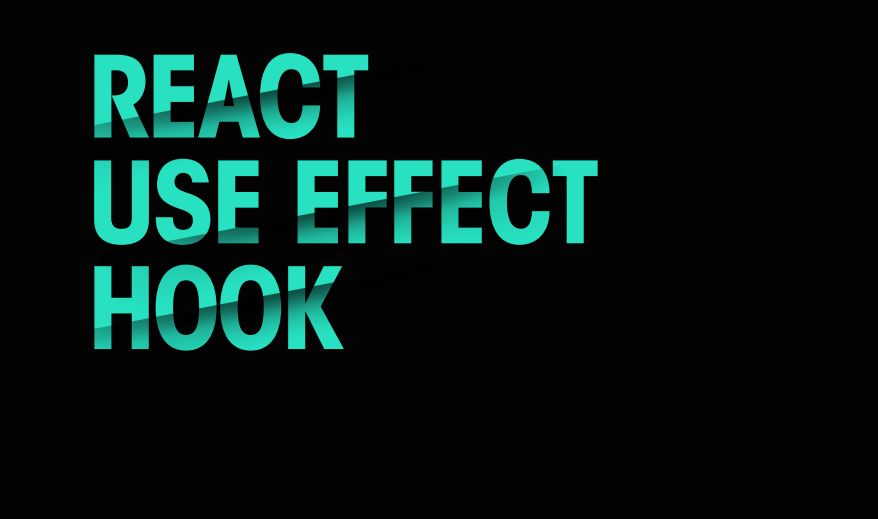React, a popular JavaScript library for building user interfaces has revolutionized how developers build web applications. React hooks stand out among its many powerful features, providing functional components with state and side-effect management capabilities. One of the most essential hooks is useEffect. In this post we will try to understand the useEffect hook in React, exploring its usage, best practices, and real-world applications.
Introduction to React Hooks and useEffect
What are React Hooks?
React hooks were introduced in version 16.8 and have since become a fundamental part of modern React development. Hooks allow you to use state and other React features without writing a class. This makes functional components just as powerful as class components.
Understanding useEffect Hook
The useEffect hook allows you to perform side effects in your functional components. Side effects are operations that affect something outside the scope of the function, such as data fetching, subscriptions, or manually changing the DOM. The useEffect hook lets you run code after the component renders and clean up effects when the component unmounts.
Understanding useEffect: Syntax and Basic Usage
Basic Syntax
The basic syntax of useEffect is straightforward:
import { useEffect } from 'react';
useEffect(() => {
// Your side-effect logic here
}, [/* dependencies */]);Explanation
- Effect Function: The first argument to
useEffectis a function where you place your side-effect logic. - Dependencies Array: The second argument is an array of dependencies that determines when the effect should re-run.
Example: Fetching Data
Here’s a common example of using useEffect to fetch data from an API:
import React, { useEffect, useState } from 'react';
const DataFetchingComponent = () => {
const [data, setData] = useState(null);
useEffect(() => {
fetch('https://api.example.com/data')
.then(response => response.json())
.then(data => setData(data));
}, []);
return <div>{data ? JSON.stringify(data) : 'Loading...'}</div>;
};
export default DataFetchingComponent;Common Use Cases for useEffect
Fetching Data
As demonstrated above, fetching data from APIs is a primary use case for useEffect.
Adding Event Listeners
You can also use useEffect to add and clean up event listeners:
useEffect(() => {
const handleResize = () => {
console.log('Window resized');
};
window.addEventListener('resize', handleResize);
return () => {
window.removeEventListener('resize', handleResize);
};
}, []);Cleaning Up Side Effects
Cleaning up side effects is crucial to prevent memory leaks. The cleanup function is returned from the useEffect callback:
useEffect(() => {
const timer = setInterval(() => {
console.log('Timer tick');
}, 1000);
return () => clearInterval(timer);
}, []);The Dependencies Array
Importance of Dependencies
The dependencies array controls when the effect runs. If the array is empty, the effect runs only once when the component mounts. If it contains variables, the effect runs whenever those variables change.
Examples
- Empty Array: Runs once on mount.
- Single Dependency: Runs when the dependency changes.
- Multiple Dependencies: Runs when any listed dependency changes.
useEffect(() => {
console.log('Effect runs on count change');
}, [count]);
useEffect(() => {
console.log('Effect runs on count or user change');
}, [count, user]);Best Practices for Using useEffect
1. Use Multiple useEffects for Unrelated Logic
Keeping unrelated logic in separate useEffect hooks makes the code cleaner and more manageable.
2. Be Mindful of the Dependency Array
Always include all dependencies that are used within the effect. This ensures that the effect behaves as expected.
3. Clean Up Side Effects
Always clean up side effects to avoid memory leaks, especially when dealing with subscriptions, timers, or event listeners.
4. Avoid Unnecessary useEffect Calls
Avoid using useEffect for operations that don’t have side effects, like transforming data or computing values.
Benefits of useEffect
- Manages operations that affect things outside the component, like API calls or subscriptions.
- Encourages the use of functional components, promoting a cleaner and more concise codebase.
- Provides a simple yet powerful way to perform operations after render and handle cleanup.
Advanced Usage Scenarios
Conditional Effects
To conditionally run effects, you can use an if statement inside the effect:
useEffect(() => {
if (shouldFetch) {
fetch('https://api.example.com/data')
.then(response => response.json())
.then(data => setData(data));
}
}, [shouldFetch]);Multiple useEffect Hooks
Using multiple useEffect hooks to manage different aspects of the component’s lifecycle is a common practice:
useEffect(() => {
console.log('Effect for prop1');
}, [prop1]);
useEffect(() => {
console.log('Effect for prop2');
}, [prop2]);Integration with Other Hooks
You can integrate useEffect with other hooks like useState and useRef for complex state and ref management:
import { useEffect, useRef } from 'react';
const RefExample = () => {
const countRef = useRef(0);
useEffect(() => {
const interval = setInterval(() => {
countRef.current += 1;
console.log(countRef.current);
}, 1000);
return () => clearInterval(interval);
}, []);
return <div>Check the console for updates</div>;
};Conclusion
The useEffect hook is an indispensable tool for managing side effects in React functional components. By following best practices, understanding the dependencies array, and correctly cleaning up side effects, you can harness the full power of useEffect to create robust and efficient React applications.
Mastering the useEffect hook takes practice and experimentation. With the knowledge from this guide, you are well-known for implementing and optimising useEffect in your React projects. Happy coding!


Hey man, write on datatypes in js